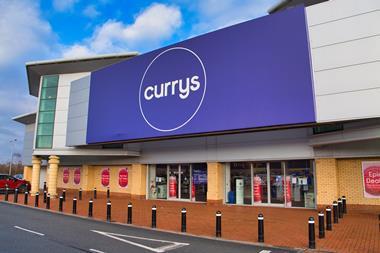Retailers with difficult web payment processes are losing customers. Rebecca Thomson considers how to keep online shoppers happy

Top Tips
Reducing abandonment at the checkout stage
Ask customers to fill in their delivery address first, then their billing address. BT Fresca head of product strategy Jonathan Bowen says filling in a billing address just before entering card details appeals to customers. It increased conversion rates from 1.2% to 1.5% at one major retailer, he says
Shorter processes are generally better than longer ones, but the main thing to ensure is that the journey is clearly signposted
Tailor the experience for your type of customer. Ask what sort of language they expect, what sort of messages they will respond to, and what features they expect to see
Don’t scare away customers if something goes wrong. If a customer gets something wrong on one of the payment forms, make their mistake obvious but don’t be too over-the-top. “Don’t make them feel like they’ve broken it,” says Snow Valley creative director Sam Andrews
At the final stage, provide small pictures of products in the basket so customers can see at a glance what they’re ordering. “People want to know what they’re ordering, how much they’re getting and when,” says ecommerce consultant Jevern PartridgInvest in technology that will make suggestions for further purchases, based on what’s in the basket and where on the site a customer has been. It is much more likely to lead to more sales than random suggestions of products
Don’t insist that users register before paying, says PRWD head of usability Paul Rourke. It puts people off. Instead, offer them the option to choose a password and create an account at the end of the process
Online payment has come a long way since the early days of online shopping, when consumers were convinced some unscrupulous hacker would immediately empty their bank account if they entered their details online. But it still hasn’t quite shaken off its image of being the most tedious and difficult aspect of the online shopping spree. Despite spending by retailers on web design and marketing, all that effort of bringing in customers is still going to waste if the payment process isn’t completely hitch free. And all too often, it isn’t.
Some sites still give customers too many excuses to abandon their shopping. The process is confusing, or information is hard to find, or the whole process takes too long. Even after a decade of development there’s still a range of common mistakes made. Given that seemingly insignificant changes – such as providing pictures of products ordered so the customer has an overview at the final stage – can improve conversion rates, these should be addressed. “Retailers in highly competitive markets should be paying close attention to their checkout process,” says Paul Rourke, head of usability at online consultancy PRWD. “Frustrate the user and they are very likely to go elsewhere.”
The checkout process is one that needs constant refining, and to do that data analytics is your best friend. “Any retailer worth their salt will be looking at their analytics data and working out what’s working,” says Sam Andrews, creative director at ecommerce provider Snow Valley. “It should be an ongoing process for anyone.” Checkout is a particularly tricky part of the online journey, he says, because people are being asked to provide so much information. It’s therefore crucial that it’s easy for them to do so. “Without a great checkout you’re never going to convert all those users retailers are spending a lot of money on getting,” he says.
Clear payment
One of the most important parts of the process is clarity. The journey needs to be crystal clear, because any element of confusion will lead to a frustrated shopper or abandoned basket. Making it easy to edit an address is key, says Jonathan Bowen, head of product strategy at BT’s web development arm BT Fresca.
Customers can end up in a confusing loop trying to change a delivery address, and although most sites have probably been guilty of this at some point, it should be avoided. John Lewis’s payment journey is a good example to emulate. Ecommerce consultant Jevern Partridge, who’s worked with Boots, Asos and Arcadia, says the department store’s clear icons at the top of the page make it easy for shoppers to see where they are in the process, how to go back if they need to, and where they’re going next.
“They take you on a journey that is very clear across the top of the page,” he says. “The way John Lewis does it is generally where people aspire to be.”
Not only is it important to keep the process clear, but the best checkouts are also simple. Never give the customer more than one or two decisions to make per page, says Andrews, and make sure the overall message is one of simplicity and focus. The idea is to give the customer as little to think about as possible, and keep their mind on the task in hand.
Partridge agrees it’s important not to distract people when you’re trying to convince them to pay. One of the reasons the checkout process at Asos.com works well is the complete lack of content on payment pages. If the process is enclosed and the rest of the site is hidden, a customer is more likely to see the process through. “It’s about wanting to close down the sale,” he says. “There’s less noise so they focus and there’s less chance of them going somewhere else.”
Ways to pay
Giving a good choice of payment methods is one other crucial factor. Andrews says some of Snow Valley’s clients have seen as much as a 20% increase in sales after allowing customers to pay using their Paypal accounts, because it makes the whole process simple. While credit and debit cards are the most well known methods of payment, it’s important to keep thinking about other options such as Google Checkout and Paypal, because they’re designed to make things easy for customers.
Choice is also important when it comes to delivery options and where the options available need to be well tailored to the audience. While tailoring is difficult for some – Amazon customers, for example, come from every walk of life – most retailers have a particular customer in mind. Kiddicare does this well, Partridge says, because it offers one-hour delivery time slots. While no one is particularly keen on waiting in all day for a delivery, busy new parents are one group who certainly won’t be happy with the idea. Offering convenient options that are designed to appeal to customers, make them more likely to buy from a particular retailer.
Once the delivery options are available, making the information clear at the beginning of the process should be a priority. Customers often have to get to an advanced stage of the payment process before finding out what their delivery options are, or if returns are free. By making that information easy to find from the start of the process, the odds of the purchase being abandoned later on are reduced.
It may not be the most glamorous part of online retailing, but a poor checkout process can make the entire web channel an expensive waste of money. Focusing on checkout simplicity and effectiveness will give customers another reason to shop with you, and its central role in the success of web shopping means it’s well worth investing time and money in it.


























No comments yet